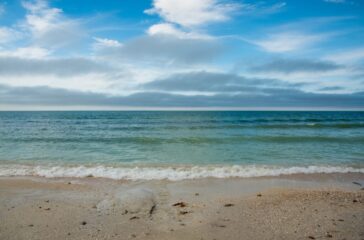Poop pathogens threaten US beachgoers nationwide, study finds
By Shannon Kelleher
Beachgoers may be on the lookout for sharks and jellyfish, but one danger lurking beneath the waves this summer originated onshore — pathogens from human and farm animal waste. Over half of US beaches tested in 2022 harbored potentially unsafe levels of contamination, according to an analysis released today by the organizations Environment America Research & Policy Center and Frontier Group.
 EWG
EWG